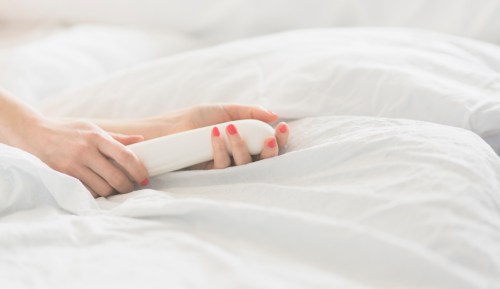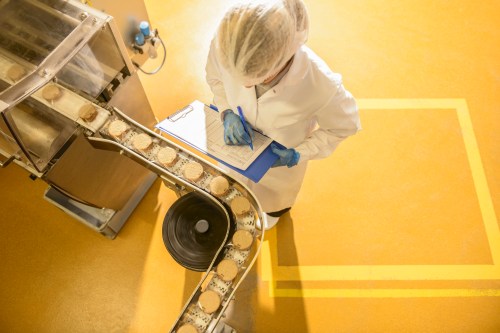Our editors independently select these products. Making a purchase through our links may earn Well+Good a commission
A couple of years ago, I was the most stressed I have ever been in my life. I was barely sleeping, constantly anxious, and felt like I was barely managing to pull off my own survival mode in order to function at work and in my personal life. While a few factors ultimately helped me to reset my nervous system— including a few different forms of therapy—I credit the Apollo Neuro device for helping me cope and restore a grounding sense within my body on a day-to-day basis.
The Apollo Neuro device—aka, Apollo® Wearable ($300)—features touch-therapy technology designed to support sleep, relaxation, focus, recovery, and, in my case, a respite from anxiety. For the past two years, this handy dandy gadget has soothed me during times of stress and helped me regain a sense of calm when I need it most. Find my full review below.
What is the Apollo Neuro wearable?
While it might look like a fitness tracker, the Apollo® Wearable doesn’t actually track anything. Instead, it sits against the skin and uses unique vibration methods to stimulate the vagus nerve and bring the mind-body connection back to a more present state.
Apollo Neuro, Apollo® Wearable — $300.00
Originally $350, now $300
Includes: Medium bands (small and large bands sold separately), Apollo device, micro USB charging cord, clip, free access to the Apollo Neuro app
Materials: Polycarbonate plastic (clip), neoprene with polyester overlays (band)
Battery life: 6-8 hours of continuous use
Warranty: One-year warranty
Colors: 3
Pros:
- Lightweight, unobtrusive device.
- User-friendly
- Supports sleep, recovery, focus, mood, and more.
- Research- and science-backed
Cons:
- Pricey
- Is often mistaken for a health/sleep tracker—it doesn’t track anything
The inspiration for the device comes from the biology of stress, how our bodies react in “fight-or-flight” situations, and the power of breathwork behind both. From this science (and 60 years of biofeedback research), neuroscientists and physicians at Apollo Neuro developed a tool that is designed to change breathing patterns to a more optimal five to seven breaths per minute.
“Most of us are breathing at 12 to 18 breaths per minute on a daily basis,” Dave Rabin, MD, PhD, the co-founder and chief medical officer at Apollo Neuro says. “You can induce states of ideal breathing patterns in our bodies, simply by delivering the rhythms that nudge the body into those states through our touch receptors through your skin,” he adds.
Simply put, the Apollo Neuro device vibrates to deliver specific frequencies that are intended to influence the autonomic nervous system. This can help to shift the body’s stress response from the sympathetic nervous system (fight or flight) to the parasympathetic nervous system (rest and relax.) Read more about the research and science behind it all here.
How it works
Each Apollo Wearable device comes equipped with seven vibration frequencies designed to help relieve symptoms of stress by bringing you to the present moment and supporting a more grounding focus. “The reason why vibration frequencies can alleviate stress is the same reason why your favorite song calms you down on a bad day,” Dr. Rabin explains. “It’s because, when we’re stressed, we’re breathing at a very fast rate, our heart rates are typically high, and we are usually spending most of that time thinking about the past or future and not the present moment.”
To use, simply clip the device on anywhere you like. (It’s most frequently worn on the wrist, however, the band can also be clipped around your ankle, your shirt collar, even on your bra strap—wherever you want to feel your “vibes.”) Once it’s on, you can use your smartphone to control it through the accompanying app, which allows you to set your “vibe” preference, the duration, and the intensity. That’s it; the gadget will get to work, pulsing as much or as little as you like, reminding you to breathe, focus, and re-center yourself, whether that’s before a big meeting, after an intense workout, or simply as you go about your day.
My review
When I purchased the Apollo Neuro device, I was desperate to feel a sense of peace. It was a year into the pandemic, and I was struggling with debilitating stress that often left me feeling exhausted and burnt out. I first learned about the device’s benefits on Instagram and knew I needed to try it.
When I first began to wear it, I wasn’t sure if it was doing much of anything, tbh. I felt the touch-therapy pulses against the inside of my wrist but didn’t really feel a sense of relief after the first few wears. But as time went on and I began to wear it more regularly, I noticed how different I felt when I wasn’t wearing it. When it was on my wrist, working its high-vibrational magic, I’d feel more myself, less stressed and more soothed. This calming sensation was particularly heightened during times of anxiety; With each buzz against my skin, the device would blanket me in a grounding sensation that made me instantly feel relaxed and restored.

What I love most about the device is how well it reminds me to be in the present moment. Mindfulness practices such as breathwork, yoga, and meditation are meant to promote a sense of present mind, which research suggests can help calm the nervous system and relieve feelings of stress and anxiety. Similarly, touch therapy can “bring us back into that ideal breathing state, which helps us be more present and pulls us out of the past and the future and into the present moment,” Dr. Rabin notes.
With regular wear and usage, I found I was able to better cope with the day’s stresses as well as remain more present within my body. Using the device in combination with other mindfulness practices and therapy, I was able to navigate my stress in a way that ultimately led me to experience the relief I craved. Even two years after the height of the pandemic, I still wear my Apollo Wearable as a way to bring me back to myself and remind myself to breathe when I need it most.
Sign up for the Well+Good SHOP Newsletter
Get exclusive deals on wellness, beauty, fitness, and food products that have been hand-picked by our editors.
Got it, you've been added to our email list.











